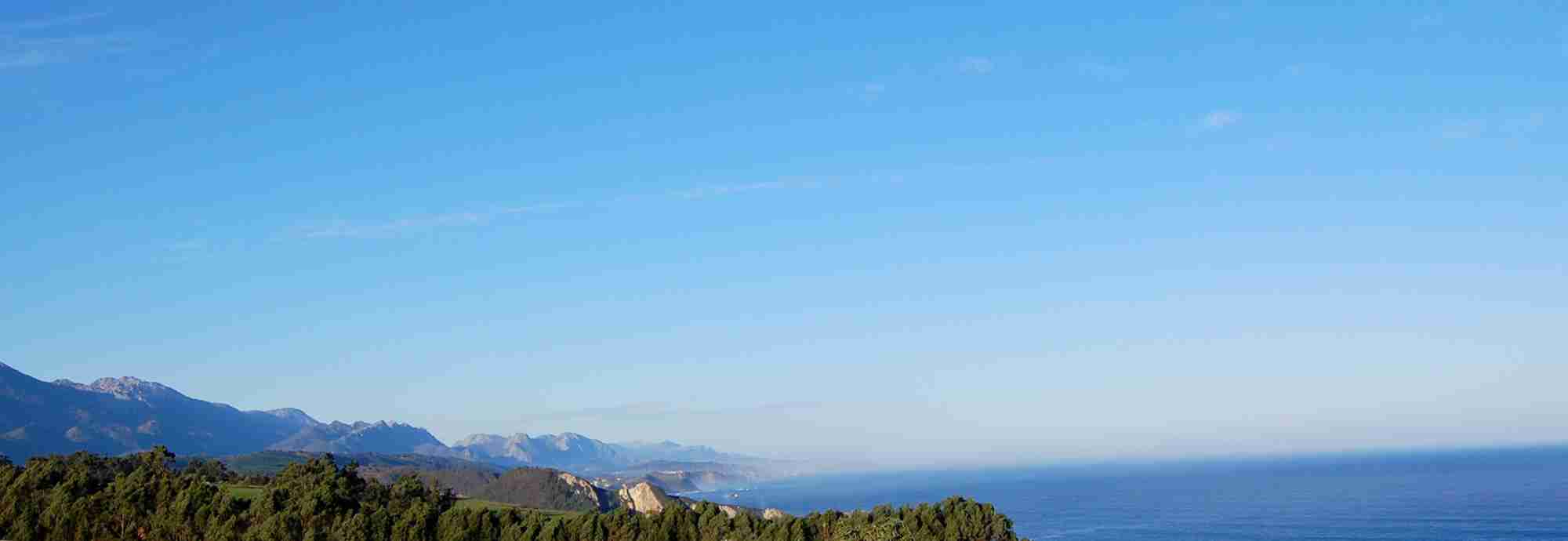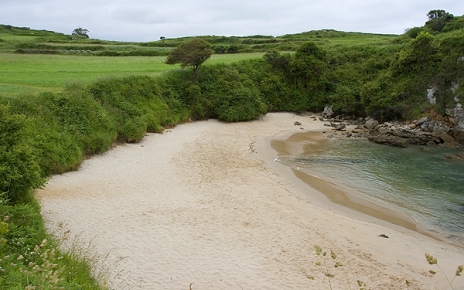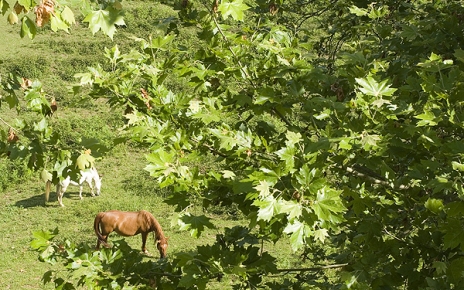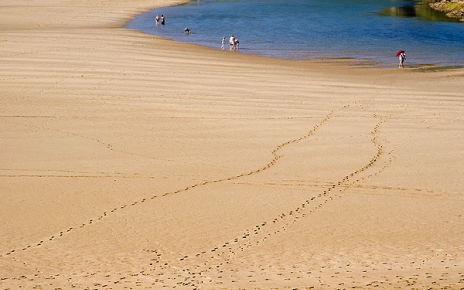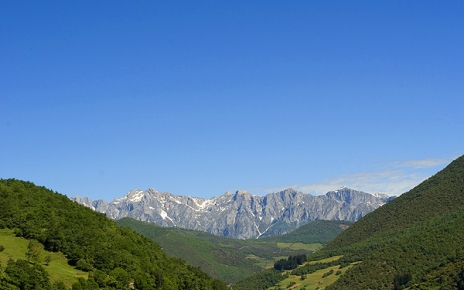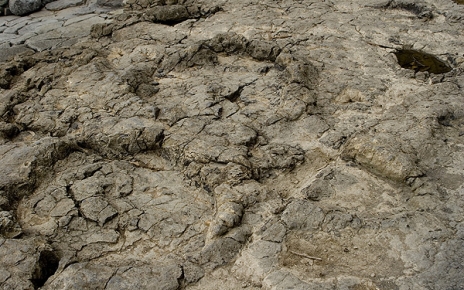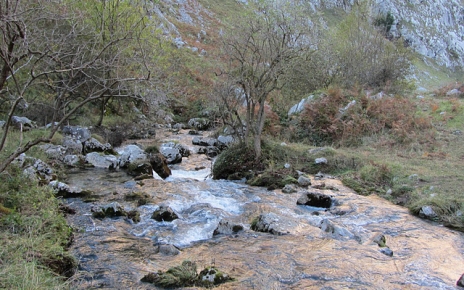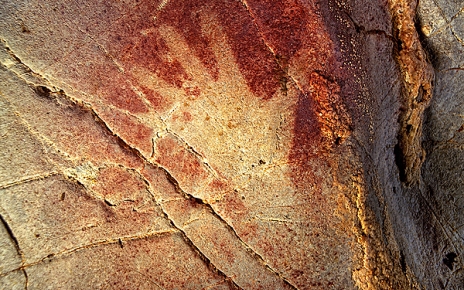Holidays in Green Spain
Everything you need to plan the perfect holiday in Green Spain: how to get there, the best places to stay, the best times of year to go, and an unbeatable selection of hand-picked holiday villas and cottages.
Find your Holiday home in Green Spain
Summary
Asturias & Cantabria; these two northern regions share Green Spain’s most picturesque mountains, the Picos de Europa, rich and healthy pastoral landscapes of river valleys and gorges, misty hills and an unspoilt coast. These two neighbours, with much in common, represent why the region captures the traveller's imagination.
The lands which embrace the northern coast of Spain are known collectively for their natural splendour and ecological richness, mountains, rivers and unspoilt coast, as Green Spain.
The green zone begins in the far Atlantic west, where Galicia has its own particular character and culture and, we think, merits its own separate Galicia guide.
The eastern reaches take in the Basque Country, which is still emerging as a holiday destination, and here we concentrate on the most popular holiday region of Green Spain which comprises Asturias and Cantabria.
For walks and views in grand, verdant valleys and mountains, visits to fishing villages or swims at Northern Spain's best beaches along the Dinosaur Coast, Green Spain is a handsome choice.
These northern lands are predominantly agricultural, spared the blight of heavy industry, with the exception of deep coal mining. Their people have a close, traditonal relationship with the land off which they live.
In Liébana, the once tribal Cantabrians have one of Europe's most stunning natural destinations. The emblematic image is of stone cottages in a broad valley, woodland and deep green hills, where dairy cattle graze.
The Asturians are especially proud of the beauty of their principality (the heir to the Spanish throne is the Prince of Asturias), where the reconquest of Moorish Spain by the Christian forces began. Although Spanish is the language spoken everywhere, Asturias has its own tongue called Bable, which doesn't imply that they all speak at the same time, even if other Spaniards may sometimes think so...
The people are similar, if not identical, in character. If recent studies are to be believed, the Cantabrians are perhaps Spain's least excitable people, showing more respect as drivers and indulging in less sex than the country's other regions, whereas the Asturians pride themselves on their prowess in bed!
Both peoples historically emigrated in significant numbers to the Americas; a few returned to their homelands in prosperity, building themselves grand homes known as casas de indianas, which stand out among the more modest popular architecture, often announced by tall palms that reminded their owners of more tropical climes.
Green Spain's oceanic climate ensures that mild, wet winters are followed by warm, but not swelteringly hot, summers. If you're unlucky, you may experience showers (it's not green for nothing!), but it's still sunnier and warmer than northern Europe.
It's above all a region for the active holidaymaker and the culturally curious. For walks and views in grand, verdant valleys and mountains, visits to fishing villages or swims at Northern Spain's best beaches along the Dinosaur Coast, Green Spain is a handsome choice.
Gastronomy also plays a significant role in a holiday experience here. Pasture lands produce cheeses and beef, to go with fresh fish, stews and apple cider.
There are dozens of good reasons for holidays in Green Spain. Idyllic landscapes come top of the list and attractive areas make up the greater part of the coast and the heartlands, with some standing out as very special. Towering above them all are the 300 peaks of the magnificent Picos de Europa. Whether you approach them from the western Asturian side or the eastern Cantabrian side, they will not leave you indifferent.
Visit high glacial lakes, walk exciting trails through the peaks, kayak down rivers, or plan days out that take you wandering from village to village in broad green valleys with a hostelry and fine home cooking at your destination.
And the mountains don't stop at Picos de Europa. Right by the sea, the Sierra del Sueve is a mysterious misty mountain range with unique horses that live only there and look-out points to the ocean. Saja-Besaya offers high altitude walking and ancient woodlands. Somiedo's woods offer a habitat and berries to the Cantabrian brown bear. Ponga takes you off the beaten track altogether and into mountain wildness.
Animal life is profuse and widespread, a significant feature of the region. Thriving autochthonous wildlife has an interesting addition in a well-run wildlife reserve near Santander, where African, American and Asian species can be seen in semi-freedom.
The coast is rarely far away for holidays that combine stays in the mountains with days at the beach. Beaches and coves washed by Atlantic waves are characteristically green, too. This isn't the built-up Mediterranean costa: it's an excitingly natural coastline of cliffs and sandy beaches often backing onto countryside and forest. It's also known as the "Dinosaur Coast" for the plentiful prehistoric remains found here of dinosaur bones and footprints. Along the coast, other attractions include fishing villages, a small train that runs the entire breadth of Green Spain, and the fascinating spectacle of blowholes.
History and pre-history can be seen in cave paintings, monasteries and churches. And the walking trails and drives, visits and climbs, swims and exploring are more than amply fuelled by Green Spain's gastronomy, which is healthy, hearty and generous.
Overview
Spain's foremost National Park is the central attraction in Green Spain. The western Picos give you glacial lakes at Covadonga, the hike along the Cares Defile, or the funicular railway to Bulnes. In this Cabrales area, famous also for its Asturian cheeses, is the most photographed and emblematic mountain in the Picos: the Naranjo de Bulnes, whose 550-metre vertical wall presents the highest of challenges to climbers in Spain.
The eastern Picos have heartbreakingly pretty walks for all levels of fitness in the microclimate of Liébana's beautiful forested valleys and mountains. For high altitude walks, the cable car from Fuente Dé takes you up to 1,800 metres.
Entered from Spain's northern coast by road thanks to a defile cut through the mountains by the River Deva, Liebana is giant bowl of valleys formed by the surrounding mountains and protected by them, create a microclimate that is warmer and dryer than anywhere else in Green Spain. It's a fantastic destination for the holidaymaker who wants to walk trails amidst picturesque scenery and enjoy Picos de Europa at their mildest. Old villages, rivers, wonderful exploring and plenty of opportunities to enjoy Green Spain's celebrated cuisine.
SIERRA DEL SUEVE
Overlooking the sea and offering more wonderful walking, the coastal Sierra del Sueve is atmospheric with swirling sea mists, out of which is not unusual for the unique asturcón horse to materialize. Drive to the Mirador del Fitu (Pico Pienzu) viewpoint for a panoramic view that ranges along the coast and out to the ocean.
PEOPLE OF GREEN SPAIN
The inhabitants of these sister regions are alike in many respects. They are a genuine people who maintain a sober reserve. You'll generally find the people to be reserved and cordial, Asturians being especially proud of their land and what it has to offer. Little about them has changed since English Protestant missionary George Borrow travelled here in the 19th century and praised their honest, upright character.
The asturianos and cántabros may not have the spontaneous cheer of Andalusians, but they are just as serious about socializing. Taking twenty minutes from work for a coffee and a chat in a café is quite typical of a people who work hard but are jealous of their quality of life. An invitation from an Asturian to share a glass or two of freshly decanted cider is virtually a social obligation.
CIDER COUNTRY (PILOÑA)
Comprising most of the inland region south of Sierra del Sueve and traversed by the N-634 road that runs from Nava, home to the Cider Museum, in the west to Arriondas in the east. It's also the main cider area, where Green Spain's best-known drink is produced and enjoyed with a ritual pouring Cider is important in local culture here. You'll find a sidrería (cider house) in most villages of any size.
Cider Country is more like a shire, enchanting to walk and explore. Country lanes follow trout-filled rivers though gorges and wind through wonderfully preserved villages of old stone cottages, valleys with views of the Picos de Europa, traditional homesteads and ecclesiastical architecture, mossy country homes and woods of beech, chestnut and oak where edible mushrooms sprout. The hills have abundant populations of deer and wild boar.
ACTIVITIES
Walkers will be in their element in Green Spain but other outdoor activities are available, too, especially in Picos de Europa. Agencies offering canyoning, 4 x 4 trips, mountain biking, horseriding, kayaking and rafting are concentrated in Cangas de Onis on the Asturias side and Potes in Liebana on the Cantabrian side. At the small town of Arriondas, the River Sella is swelled by the Piloña river, making it a big draw for the number of small operators offering downriver canoe and kayak trips. It has become such a popular activity that you'll have no problem hiring a boat if you want to try it.
BEACHES
Green Spain is at its natural best for beach lovers, particularly the strands and coves along the Asturian coast. Rodiles beach, backed by pine forest, is deservedly well-known but there are plenty more options, in thrillingly natural settings. Sample them in our online guide to the most special Asturias beaches that we have found and photographed. Cantabria has real beauties, too: Valdaliga and Comillas, Laredo, Noja, Sardinero and Covachos...
OYAMBRE NATURAL PARK
The coastal Natural Park of Oyambre offers more totally unspoilt beaches and dunes at San Vicente de la Barquera.
FISHING VILLAGES AND TOWNS
In popular Llanes, enjoy strolls along the cliffs, the riverside or the harbour to the lighthouse, past Basque sculptor Agustín Ibarrola's Cubes of Memory, and then dine excellently at a choice of bars and restaurants along the cobbled streets of the old town. Lastres is one of the nicest of the seaside towns, with its own beach, a fishing harbour and great views out over the sea. From the beach at elegant San Vicente de la Barquera you have views of snow-topped Picos de Europa.
DINOSAUR COAST
Beaches and fishing villages are strung out along what is popularly known as the "Dinosaur Coast," owing to the impressive fossil record found here, including fossilized dinosaur footprints. Children will like the Jurassic Museum: close enough to be visible from Lastres, a visit to the museo jurásico can then be followed up by going down to La Griega beach, which the museum overlooks, to search for dinosaur footprints. They really are there, fossilized in the rock. Preserved for us to find 65 million years later, dinosaur footprints are to be found all along the coastline of Green Spain, between Ribadesella and the town of Gijón, Asturia's main port.
SANTANDER
Much more than an entry point for visitors to Green Spain by plane and ferry, this elegant town on a curved bay was for many years the resort of choice for Spanish royalty and today you can visit King Alfonso XIII's summer palace and the Grand Casino. A 30-minute walk from Santander train station (by the ferry terminal) brings you to the Maritime Museum of Cantabria with its giant aquariums. There are some fine beaches at Santander, too: Playa del Sardinero, Playa de los Milagros and Somo.
GUGGENHEIM MUSEUM
Frank Gehry's Guggenheim Museum in Bilbao combines an architectural wonder with one of the world's foremost museums of modern art. A cultural must if your visit to Green Spain brings you via Bilbao by plane or ferry.
NIEMEYER CENTRE
The International Cultural Centre designed by Brazilian architect, Oscar Niemeyer, was inaugurated in 2011. After being temporarily closed due to political disagreement, it is open again and starting to find its feet as a major reference in the cultural world. It's situated at Avilés, close to Asturias Airport, where it represents the showpiece of a large-scale scheme to regenerate the Avilés waterfront.
CAVES AND CAVES PAINTINGS
Human prehistory and history is important here, too. This cultural aspect of Green Spain is simply fascinating and evidenced above all at the Altamira caves near Santillana del Mar, west of Santander. The caves of Altamira were the first ever where prehistoric art was found. None of the paintings in the series of 17 caves is less than 13,000 years old. Today, conservation measures mean they are closed to visits, but a replica cave and museum built here bring the story of European ancestors to life.
In Asturias, the Park of Prehistory at Teverga similarly recreates caves and their paintings. Anf for a real experience of Palaeolithic paintings, you can visit the caves of Puente Viesgo and Pendes. Another exciting cave experience there is the terrific El Soplao complex, whose galleries of stalactites and stalagmites are a subterranean fantasy.
FEVE TRAIN
The narrow-gauge FEVE train is a very pleasant and inexpensive way to travel the coast and stops at villages by beaches. The network extends across all of Green Spain.
PASIEGOS AND ASÓN VALLEYS
These magnificent valleys south of Santander are Green Spain off the beaten track. Rural retreats and superb drives within easy reach of Santander and the coast of eastern Cantabria. The three Pasiegos valleys each have something special: Cábarceno Wildlife Reserve in Pisueña Valley, Puente Viesgo in Pas Valle and the architectural spendours of Liérganes village in the Miera Valley. The little FEVE train runs in this area to La Cavada village. The Asón valley's highlight is a high waterfall in a beautiful landscape, driving south from Arredondo.
WILDLIFE
Wildlife flourishes in Green Spain. Thanks to the health of the natural environment, some inaccessible mountain hideouts and legal protection, the endangered Cantabrian brown bear still survives here and efforts are being made to increase its very low numbers. Otters, wildcats, foxes, eagles, falcons, badgers, chamois deer, occasional wolves and the rare capercaillie all live here, along with a comprehensive population of lizards and frogs.
Bears
The endangered Cantabrian brown bear is Green Spain's most precious animal. They are very few breeding pairs and the bears are sensibly shy of humans, making them difficult to spot. The bears are respected by local people, for whom they represent a link with their history and patria, or homeland.
SANTO TORIBIO MONASTERY
One of the cultural highlights of Liebana, Santo Toribio dates back over 1,000 years.
BEST OF THE REST
Explore Green Spain
Heading off on hiking trails is immensely satisfying and yet getting in the car to explore can be just as exciting. You can get off the beaten track on roads that snake along rivers and pass through defiles to open up to natural wildernesses where undisturbed villages rarely see a stranger. In Cantabria, Saja-Besaya is paradisiacal mountain parkland of oak, beech and hazel inhabited by wildlife. In Asturias, the beech woods and meadows of Redes Park are wonderful to roam on foot or mountain bike. The thatched mountain cabins of Somiedo gave shelter from the elements to herders migrating livestock to winter or summer habitats. Today, Somiedo is a living example of an ecosystem where man and beast live in successful equilibrium, and the mountainsides are home to a small number of bears. The route south into Ponga is perhaps the most amazing of all. The road snakes through the gorge of the Desfiladero de los Beyos into virtually uncharted territory of mountain fastnesses, waterfalls, the vast Peloño Forest, and unfolding scenes of increasingly wild nature.
Cabárceno Nature Reserve
Exotic living creatures are collected together in Cabárceno Nature Reserve, a well-designed safari park of some 750 hectares just ten minutes from Santander. Elephants and tigers, lions, kangaroos and giraffes all wander freely within the park's boundaries. Anyone who has set their heart on seeing a Cantabrian brown bear, extremely difficult to spot in the wild, can see them here.
Fuente Dé cable car
A popular day out takes you to Fuente Dé and the cable car up into the high mountains. Not for the faint-hearted, it climbs up to double the altitude to 1,450 metres, where it then drops you off to contemplate an extraordinary panorama of the National Park.
Santoña
On the coast east from Santander, Santoña is surrounded by a unique Natural Park of marshlands. Santoña is well known for its delicious anchovies.
Blowholes
Look out for the curious phenomena known locally as bufones. These are spouts of water that gush high into the air whenever waves rush into caves and are pressurized into escaping through eroded blowholes. The water roars out! We recommend the Bufones de Arenillas 8 km east of Llanes and the Bufones de Pría between Llanes and Ribadesella.
Santillana del Mar
Visitors to Altamira will be delighted by the architectural heritage of local Santillana del Mar, sometimes described as a living museum.
Green Spain's cows
The humble cow deserves championing here. Not only do pretty brown cows add life and alpine charm to the hillsides of Asturias and Cantabria, they provide us with a wealth of dairy produce and quality beef. Without the cows, nobody's experience of Green Spain would be the same.
FOOD AND DRINK
Gastronomy and Green Spain go together like honey and bears. There's no excuse for going hungry here. Typical dishes in Cantabria are Tudanca beef, venison, mountain stew made with beans or chickpeas and Potes chorizo. In Asturias, the regional dish is fabada, a stew of tender white beans flavoured with salt pork, chorizo and morcilla. And Asturian cider is more than just a drink: it's a culture all to itself, a ritual imbued with social significance, and worth reading up on before you go.
From sea and river come monkfish and sea bass, sea bream, prawns and trout. Servings are commonly generous. By the time you reach desserts such as sobao pasiego, a lemony sponge cake, you may be wondering how to walk it all off.
Both regions are a wonderful choice for food lovers, with beef and dairy cattle generally roaming free on green hillsides. Try organic steak or mountain stew in Cantabria, the famed fabada bean stew of the Asturians, or one of their cheeses washed down by tingling cider.
Asturias has a tradition for hearty eating that only mountain folk could maintain. Only light eaters and vegetarians might find it a challenge. Expect tasty, hot and generous servings. Fabada is a slowly cooked, rich stew based on a special white bean and flavoured with pork, chorizo, black pudding and saffron. Beef and lamb generally come from animals that have fed on the green and healthy Asturian pastures. With the sea never far away, the local gastronomy also includes fish and seafood.
Less sparkly and more tart than its English Somerset counterpart, Asturian cider is drunk with meals, with relish, and at the drop of a hat. Much more than just a drink to the Asturians, it has its own ritual pouring – being decanted from a considerable height directly into the glass- as upon this depends both its taste and its power to refresh. Sidra is the beverage par excellence in Asturias and you'll soon see how much is a essential element of the culture when you see friends a sharing a bottle or two, decanting it in a brief cascade from above shoulder height, not out of bravado, but to give it its live and zesty taste.
Cider is typically enjoyed at a cider bar (sidrería) but also in restaurants and you can also visit cider factories where apples are pressed and fermented in giant vats.
Cangas produces its own wine but quite frankly it's not a shade on Spain's major reds such as La Rioja, Ribeira de Duero, Priorato or the whites of neighbouring Galicia, which you'll find on the wine list at any decent restaurant. Sidra is classically accompanied by the local Cabrales cheese, spicy and creamy. Cabrales isn't the only cheese: Gamonedo is also excellent.
Another local delicacy is cecina: air-cured smoky beef.
"Hearty stews and salads and a variety of cheeses alternate with fish and seafood from the nearby coast."
Cantabria is a land rooted deeply in tradition, which you will see expressed in dress and dance at local fairs, but also in the fine culinary style. Cheeses, boletus mushrooms and beef are outstanding. The rewards of a healthily watered land, in contrast to sun-parched Andalucia, are plenty and some of them will end on your table, since fresh farm produce is the staple in Cantabrian gastronomy.
Hearty stews and salads and a variety of cheeses alternate with fish and seafood from the nearby coast. Food is taken seriously here. There are weekend country inns where kitchens are constantly busy with clanging pots, hurrying plates out to hungry wayfarers. Tudanca beef, lamb, wild salmon are as common in mountain dishes as lima bean and tender chickpea soups. Try sirloin with Tresviso cheese, hake in parsley sauce, chorizo, anchovies, squid with onion, and Pasiega cheesecake. Tresviso – or Picón Bejés – is a blue cheese matured for months in local limestone caves, presumably ones chosen for their absence of bears. Orujo de Liébana, made from wine-pressings, is the local, fruity brandy.
Here are Cantabrian dishes in Spanish with their English equivalents:
Cocido lebaniego – Liébana mountain stew made with chickpeas, potato, collard greens, and chunks of bacon, chorizo, ham and black pudding.
Guiso marinero – Seaman's stew, commonly of fresh tuna, potato, onion, peppers, tomato and flavoured with chili pepper, white pepper and white wine. In San Vicente de la Barquera, this dish is called sorropotún. In Santoña y Laredo, it's called marmite (sic).
Variations on the guiso marinero are:
Merluza en salsa verde – Hake in parsley sauce
Calamares encebollados o en su tinta – Squid with onion or in its own ink
Bocartes - Anchovies
Almejas a la cazuela – Clams
When it comes to fish dishes, Cantabria has shines more for quality and variety than quantity.
You're most likely to find merluza (hake), rodaballo (turbot), sardinas (sardines), bonito (tuna), lubina (sea bass), rape (angler fish) and rabas (fried squid). In Santoña, which presides over marshes on Cantabria's eastern seaboard, you will eat the best anchoas (anchovies) in all of Spain.
There's less seafood than elsewhere on Northern Spain's Atlantic coast, where Galicia is the country's main producer, but expect centollo (spider crab), langosta / bogavante (lobsters), almejas (clams) and nécoras (small crabs).
River fish such as trucha (trout) and salmón (salmon) are also common.
Cantabrian cream cheeses (queso de nata) are made from cow's milk. Local cheeses in Liébana, typically strong in flavour, may be made from sheep, cow or goat's milk. There are three main types. Picón is a spicy cheese, of which the superior comes from Tresviso. Ahumado is smoky and we recommend the Aliva variety. Quesucos are little cheeses, of which we like the Lebeña.
The Pasiego valleys produce their own fresh cow's cheese (queso pasiego fresco).
Cheeses are nicely complemented by sidra (apple cider), which is a popular drink in Cantabria, if not quite as deeply embedded in local culture as in neighbouring Asturias.
Cream cheese also features in desserts, where it may be served with honey and walnuts or as cheesecake (quesada pasiega). Perhaps the best-known Cantabrian dessert are the sponge cakes known as sobaos, but there are other local specialities such as almond cake or the frisuelos (pancakes) of Liébana.
The one drink that is authentically Cantabrian is the Orujo de Potes, a digestive liquor made from pomace. For wine in restaurants, you will find reds from elsewhere in Northern Spain: La Rioja or Ribera de Duero, and fruity whites from Galicia: Ribeiro or Albariño.
Climate
The constant, unremitting summer heat of Southern Spain doesn't suit everybody by any means. To a large number of visitors, the fresher climes of Spain's north – from northernmost Galicia, through Asturias and Cantabria to the Basque Country – can come as a welcome relief.
The Atlantic rules here and the entire region has an oceanic climate.
The rich forestation, verdant valleys and often picturesque mountains of this region are watered by the Atlantic Ocean's westerlies, whose humid influence is felt all the way across these lands.
Although rain in summer is infrequent, the chance of precipitation is ever present throughout the year, allowing fields to retain a deep green even into August. Green Spain, as it has come to be known, is visited by more and more people for its landscapes of healthy flora, birds and wildlife.
Temperature and rainfall are determined in large part by where a location is in relation to the mountains. Green Spain has a massif (the Cordillera Cantabrica, including the magnificent Picos de Europa) which runs parallel to the coast, like a backbone through the region, retaining cloud groups and rain, but also a certain warmth.
Within this broad region, Asturias and Cantabria experience a mild climate by the coast. In winter, frosts are rare, and in summer, the heat is never excessive.
Some interior locations of Cantabria are completely sheltered by mountains to the north and west: the Liebana area and Campoo, especially, have unusually reliable summers. It is here or closer to the coast that provide the most satisfying holiday experiences.
Go beyond here to the remote interior and the far side of the mountains and you find nothing of the ocean's mildness. Temperatures there tend to be more extreme, with dryer conditions but long, "proper winters".
The number of sunny hours per year is fairly equal throughout Green Spain. Coastal fogs and high cloud cover can occur in any season and even summer days may not provide perfect beach weather, although they retain the magic of Green Spain. A grey day here reflects a more dynamic atmosphere than similar European latitudes.
Good weather can be reasonably expected from mid-June to mid-September. Sunny days are at least 25% more probable in Green Spain than in Paris, London or Amsterdam.
Major cities in Green Spain such as Santander, Bilbao and San Sebastian have a relatively low number of hours of sun per year. The sunniness tends to tail off the farther east one goes, with northern Galicia enjoying slightly sunnier summers than San Sebastian in Basque country.
What about the rest of the year: spring, autumn and winter?
Spring and early autumn will often provide weeks of good weather, whereas the same is unlikely in winter. Winters are either wet or very wet by the coast and often leave a thick coating of snow on the high mountains that doesn't melt back until the summer. Pockets of snow can be made out on summits throughout the year and are sometimes visible from the coast.
Maps
Getting there
The nearest airports for our holiday villas and cottages in Green Spain are Asturias Airport (OVD), Santander Airport (SDR) and Bilbao Airport (BIO).
FERRY PORTS FOR GREEN SPAIN
If you're coming from the UK or Ireland and want to bring your own car, Green Spain has ferry ports at Santander and Bilbao. The crossing takes at least 24 hours, but it does allow you to bring all that extra luggage you couldn't take on the plane, and avoid car hire.
Ferry routes
Operated by brittanyferries.com. on impressive ships in their modernized fleet. You can also bring a pet with you in onboard kennels or pet-friendly cabins.
• Portsmouth - Santander
• Portsmouth - Bilbao
• Plymouth - Santander
CAR HIRE
Rural cottages and holiday villas in Green Spain tend to be in secluded locations which are inadequately served by buses and a car is generally essential.
Unless you're taking the car ferry to Santander or Bilbao, you'll need to rent a car. It's practical, convenient and needn't be expensive. It often works out cheaper than taking a taxi and is then invaluable for shopping, eating out, visiting places of interest, days out at the beach, and making an easy return trip at the end of your stay.
If your villa is up a track, be sure to rent a vehicle with good clearance. This means most normal cars: simply don't be tempted by a low-slung sporty model. If the track is steep, opt for a car with decent uphill power (not the smallest budget option).
Driving times from airports your holiday property are shown on the villa's property page. You will receive a map with detailed directions to your villa as one of your holiday documents from Rustical Travel.
Rustical Travel doesn't have a professional arrangement with any particular car hire company and we suggest you shop around for car hire using a broker such as rentalcars.com or similar.
It's easy to compare prices of rentals with companies that operate at the airport you fly into, and all the reputable agencies have online payment for advance booking these days.
You don't have to use the broker. If you prefer, you can check the car hire companies own websites, compare prices, and book direct.
PUBLIC TRANSPORT
Public transport in Green Spain is limited, with few buses. For convenience and all practical purposes, a car is a necessity in rural areas.
Except for when you're on walks, the only times you will not need a car is for the cable car at Fuente Dé or taking the FEVE light railway.
The small FEVE train is a pleasurable and inexpensive way to take a journey for a day out in Green Spain, stopping at little stations along the way. Its Northern Spain network is quite extensive from Galicia across Asturias and Cantabria to the Basque Country.
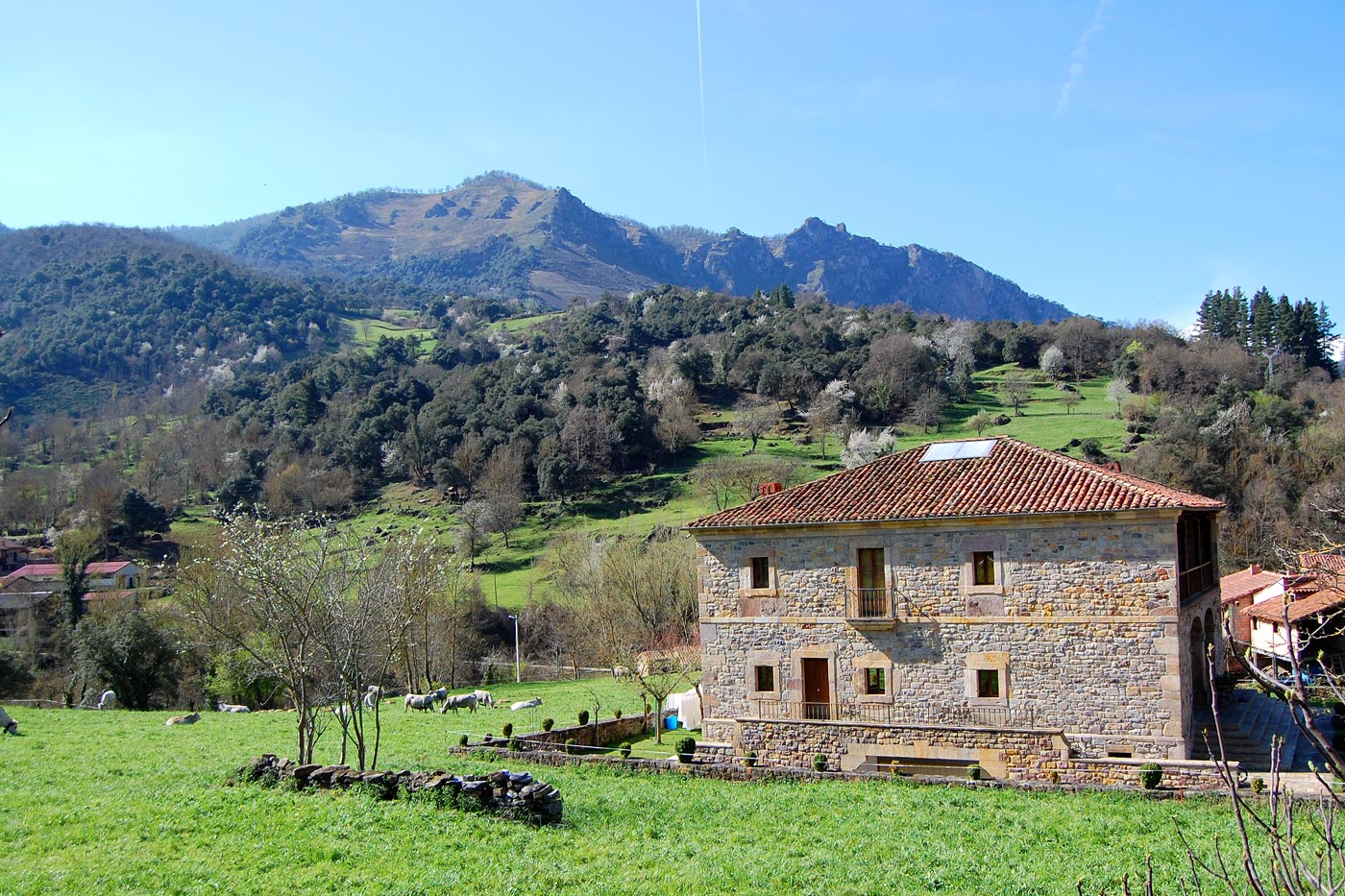
Liebana, Green Spain

Cantabria mountains: the view from Cucayo village

Tazones fishing village

Monumental 1940s university in Gijon, Asturias
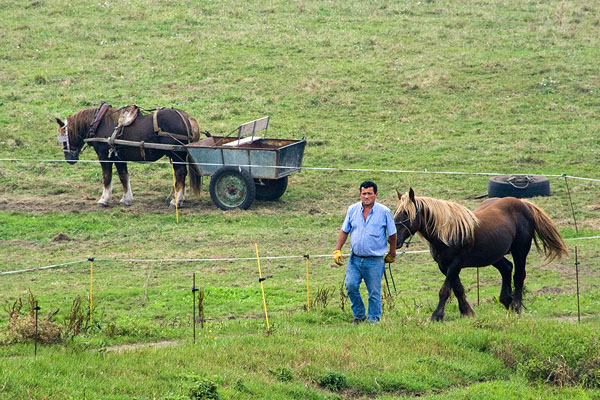
Traditional farming
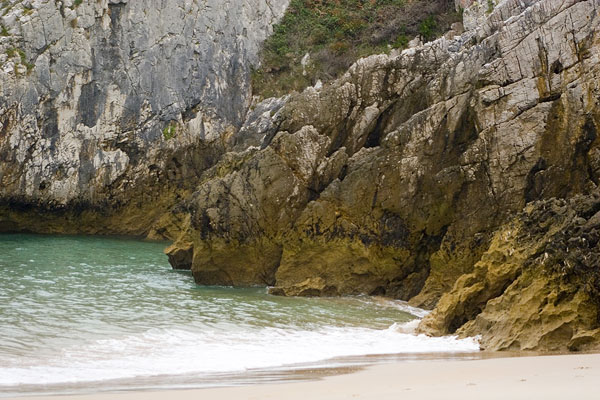
Unspoilt wild beaches
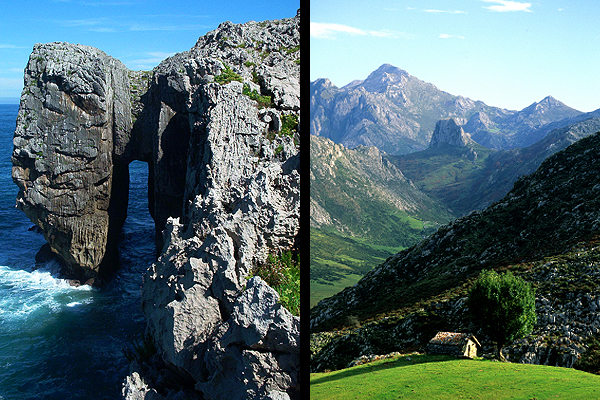
Green Spain combines dramatic coastal and mountain scenery
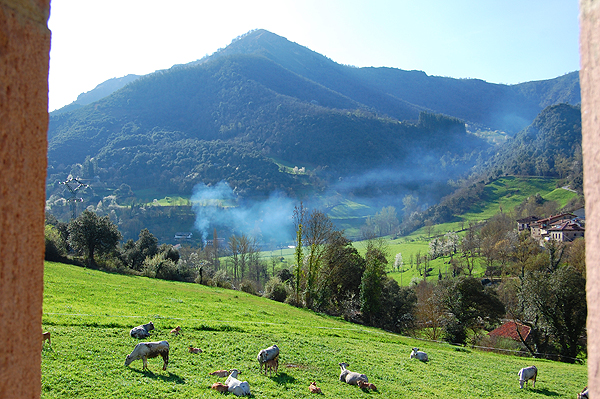
Views from holiday home AC18 in Picos de Europa
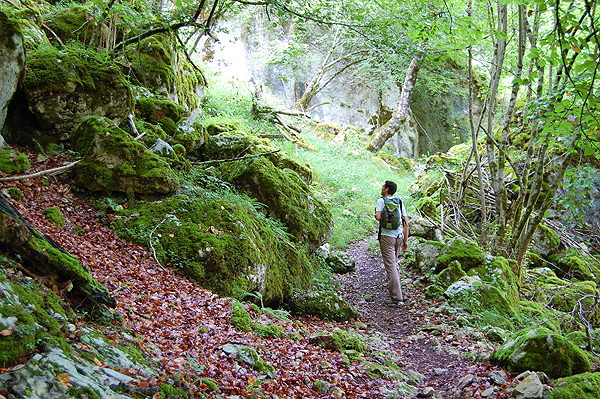
Walk through forests in Cabrales

Traditional food fairs fill any year's calendar

Urban beach in the coastal town of Llanes

Traditional market in Potes, Cantabria

Jurrasic museum near Lastres, costal Asturias
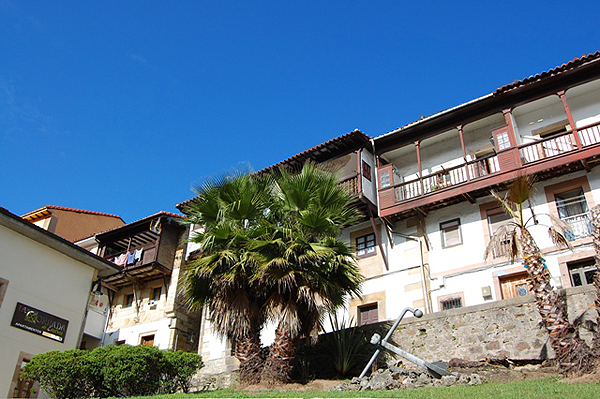
Traditional houses in Lastres, Asturias
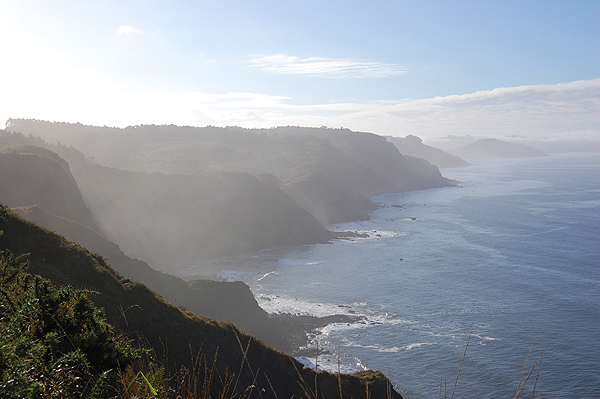
Dinosaur coast

A strong cider culture
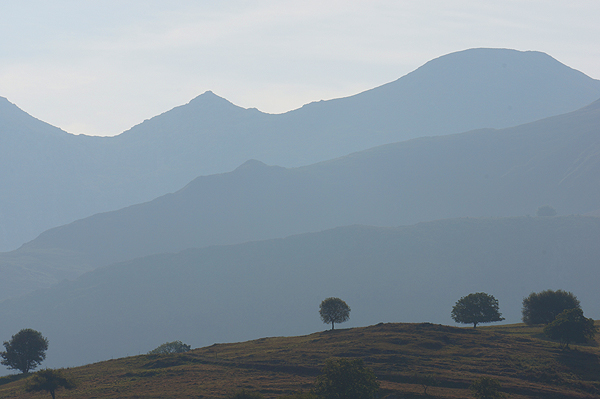
Landscape at the Sierra del Sueve, Asturias

Sierra del Cuera, Asturias
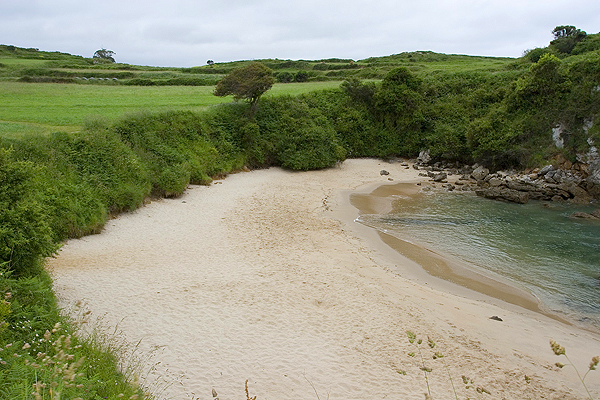
Gulpiyuri curious beach
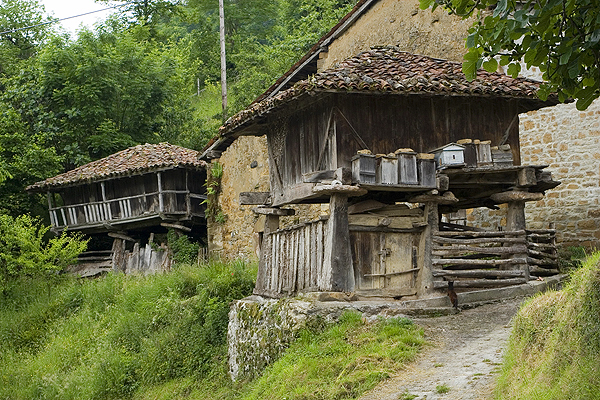
Traditional grain storage in Northern Spain

The feeling of Green Spain

Liebana village, Cantabria
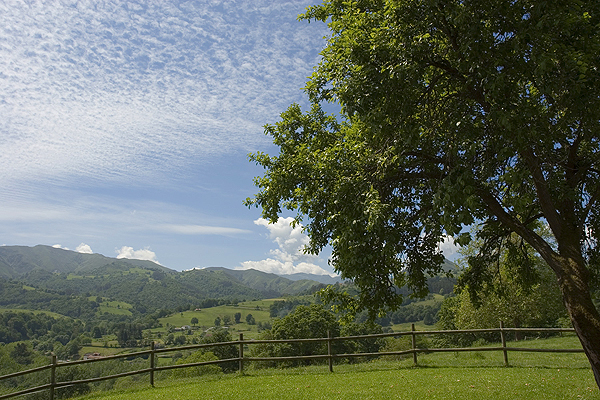
Typical views (photo taken in the Cider country, Piloña)

Oyambre sandy beaches near Santander

Picos de Europa
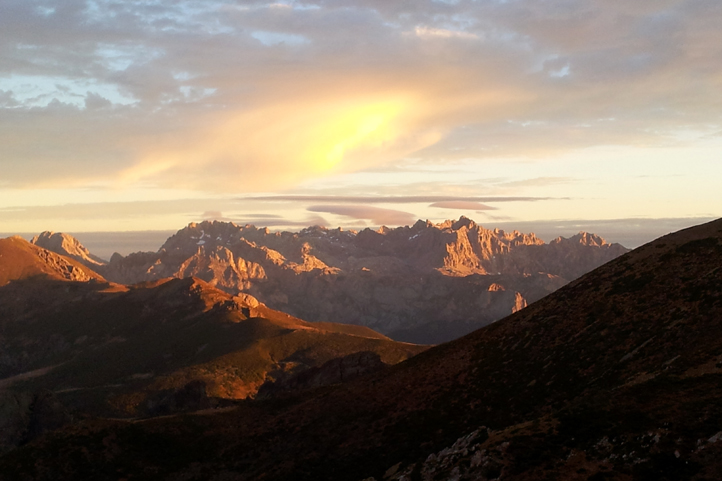
Eastern Picos from Liebana
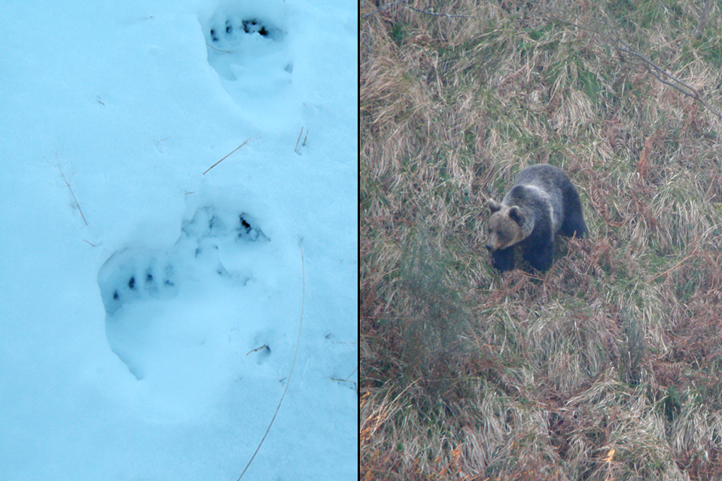
Brown Bear and its footsteps
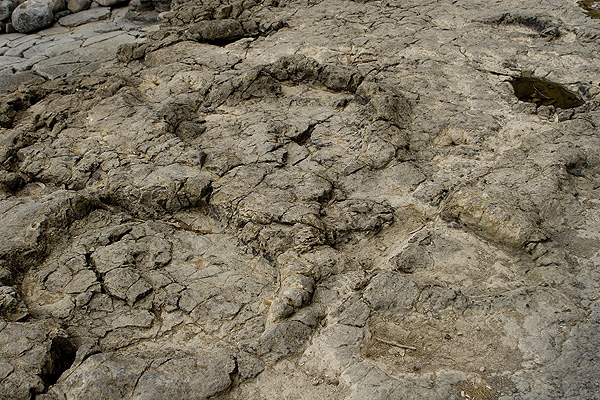
Real dinosaur footprints in La Griega beach
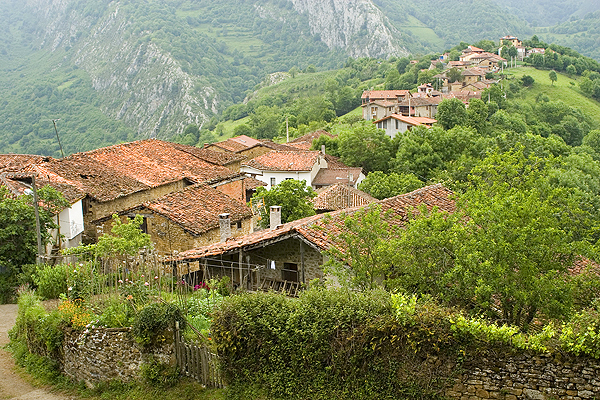
Small village in Ponga Natural Park

Puerto de Vega in Asturias (near the Galician border)
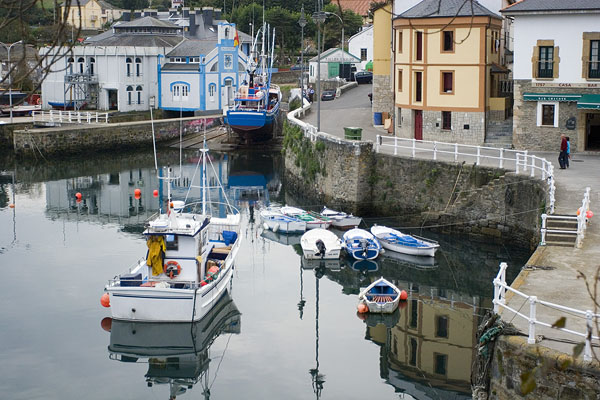
Fishing port of Puerto de Vega
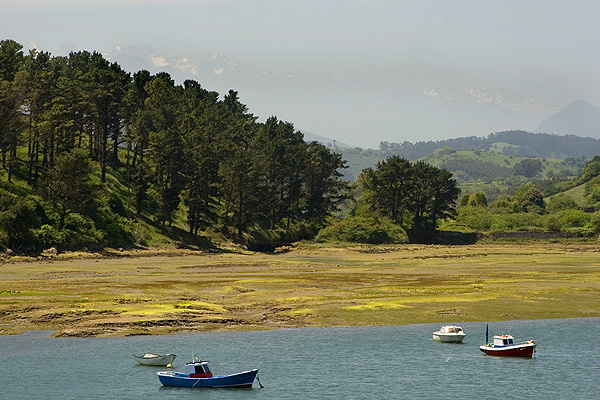
San Vicente del Barquera: Cantabria coastal town with views of Picos
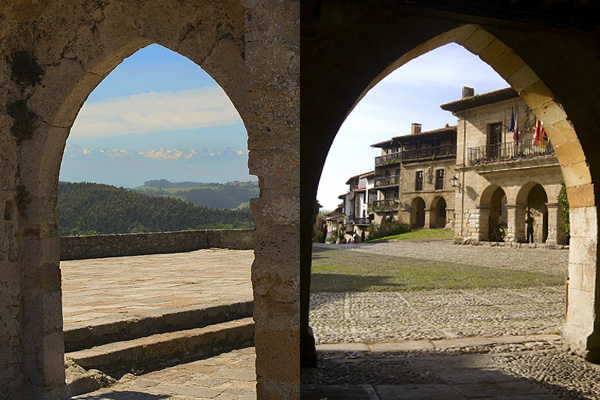
Well-preserved traditional towns and villages
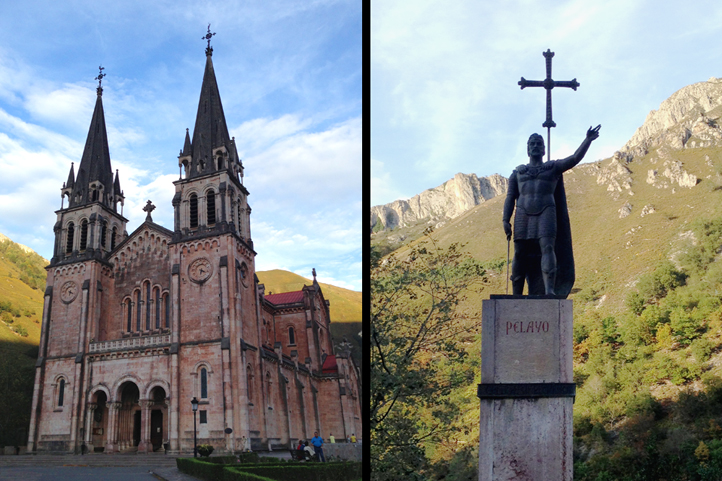
Covadonga and Don Pelayo
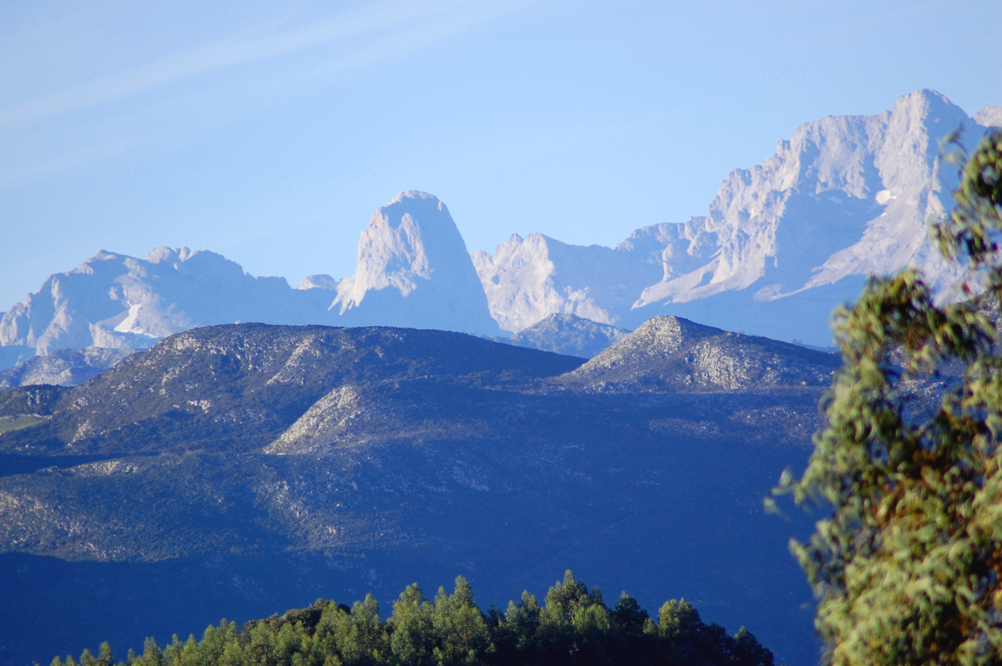
Picos seen from the Cantabrian Coast

Cantabrian sea

Rivers in Picos mountains
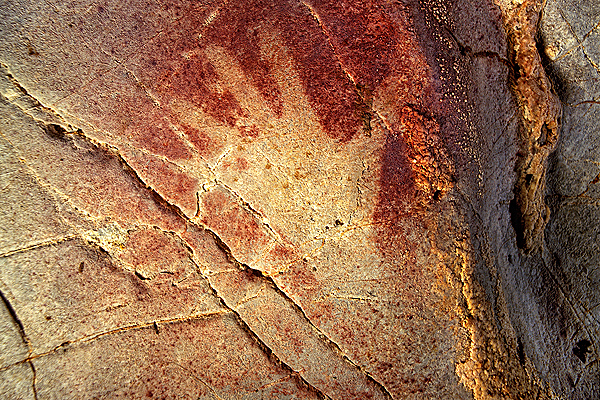
Castillo Cave Unesco heritage
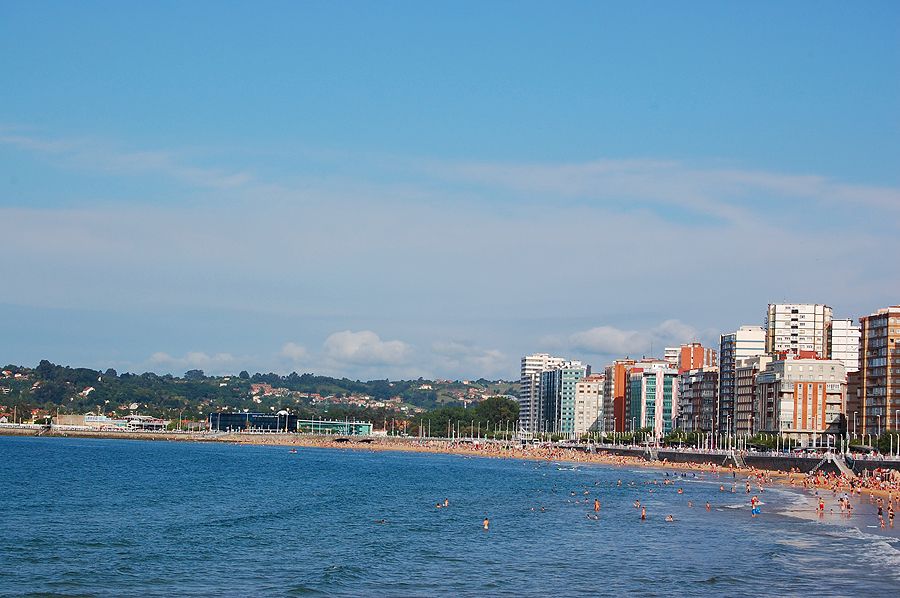
Gijon urban beach







































